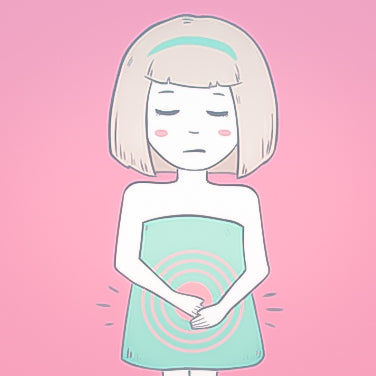
8 Period Problems You Should Never Ignore by Dorkys Ramos
Share
Pay attention to these menstrual cycle symptoms.
When something’s not right with your menstrual cycle
There are plenty of women who could attest to the pain and inconvenience that is getting a period every month, but a normal menstrual cycle—or lack thereof—can also be an important gauge on your health and tip you off when something is going awry. Be on the lookout for these period problems—they could be red flags you need to bring to your ob-gyn.
Your periods were regular each month and then became irregular
The characteristics of a menstrual cycle vary from woman to woman, but the average menstrual cycle typically lasts 25-30 days, with a period lasting three to seven days. If you’ve noticed a change in your usual menstrual schedule or your cycle is longer than 35 days or shorter than 21 days, talk to your gynecologist about what underlying issues could be behind the shift. Health conditions like PCOS, thyroid problems or other issues could be responsible for period problems like cycle length irregularity.
You haven’t had a period in 90 days
There could be a number of reasons why your period hasn’t arrived, including pregnancy or perimenopause if you’re in your 40s or 50s. Once you approach these later years, the estrogen production in your ovaries begins to slow down and your period will become less frequent and shorter until it stops altogether. If these two aren’t the cause of your period problems and you’re considerably younger than the average age for menopause, which is 51 years old, you could be experiencing early menopause. Other reasons for missed periods (that have nothing to do with pregnancy) include STDs, considerable weight loss or gain, hormonal issues, or even exercising too much.
PMS is totally messing up your life
Premenstrual syndrome (PMS), which occurs five to seven days before your period and ends when your flow begins, goes beyond the typical cramps and discomforts associated with your period. Along with PMS come feelings of depression, mood swings, and an inability to focus as well as headaches, bloating, and fatigue. According to healthywomen.org, 30 to 40 percent of women experience premenstrual symptoms that affect their lifestyle and three to eight percent of all women experience the premenstrual dysphoric disorder, a more severe condition that is also heightened right before menstruation occurs.
You’re spotting between your periods or after going through menopause
Bleeding at any time other than when you’re on your period or after you’ve experienced menopause could be symptoms of fibroids, signs of endometriosis from a problem in the lining of the uterus, or even endometrial cancer.
Your menstrual flow is embarrassingly heavy, or your period lasts more than seven days
It might seem like it’s so much more, but the average amount of menstrual fluid excreted during your period is only two to three tablespoons. If you find that you’re losing a significant amount more than usual and have to change your tampon every hour or so, talk with your doctor. Some causes of prolonged or heavy menstrual bleeding, or menorrhagia, include hormonal changes, polyps or fibroids in the uterus, a miscarriage, issues with an IUD, or other medical concerns. Menorrhagia is one of the most common period problems, but you’ll want to make sure it’s not caused by something serious. Prolonged menorrhagia could lead to a severe loss of iron and eventually anemia.
You feel weak, sore, dizzy, are vomiting, have diarrhea or a high fever, or develop a sunburnt rash while using a tampon
These are some of the symptoms of toxic shock syndrome, a rare but sometimes deadly disease that can develop if you leave a tampon in for too long. To reduce your risk of contracting TSS, use a tampon with the least amount of absorption you need, change it out at least every four to eight hours, or switch to pads.
You have bad cramps that keep you from doing your regular activities and are not helped by pain relievers
Severe cramps and painful periods, known as dysmenorrhea, are another sign that something isn’t right. In these instances, the pain could be caused by more serious illnesses, such as uterine fibroids or endometriosis.
You’re 16 years old and have yet to start menstruating
The average young woman can get her first period anytime between the ages of eight and 15, but if Aunt Flow still hasn’t arrived soon after the mid-teens, something could be up. Primary amenorrhea, typically caused by a hormonal issue within the endocrine system, is the lack of a menstrual period and usually diagnosed in young women who haven’t had their period by the age of 16.
This article was published in Reader's Digest
READ MORE AT: https://www.thehealthy.com/periods/period-problems/
